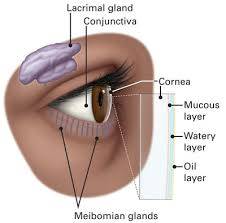THE HISTORY OF HUMAN EYE
The eye has been the subject of conflicting interpretations since antiquity, with Plato, Aristotle, Theophrastus, and Galen all believing in the active eye. Galen defined many of the fundamental features of the anatomy and physiology of the eye until the seventeenth century, including the retina, cornea, iris, uvea, tear ducts, and eyelids. He paid particular attention to the crystalline lens, which he described as a round lens in the middle of the eye. The eye was a subject of special interest in medieval Islamic medicine and philosophy, with dozens of specialized treatises on ophthalmology appearing between the ninth and fourteenth centuries.
Islamic physicians debated many details of the eye, including the number of tunics and the theory of extramission. In the early 10th century, al-Razi noted the pupil's contraction and dilation, while al-Haythan noted that the eye was injured by strong light. Avicenna argued for intromission, while Master Nicolaus wrote that the optic nerve passes through the center of the eye as far as the crystalline humor, and the visible spirit is mingled with clean air and transports its rays to the body. Renaissance anatomists learned a great deal about the anatomy of the eye and Leonardo da Vinci fundamentally transformed his theory of vision.
In the sixteenth century, the basic theory of sight remained in place, but many physical features of the eye were described differently. Alessandro Achillini challenged the idea of the crystalline lens as the main organ of sight, while Vesalius denied that the optic nerves were hollow. By mid-century, anatomists were looking more closely at the crystalline humor, which no longer seemed round and centered but more oblong and towards the front of the eye. In 1604, Kepler proposed the first theory of the retinal image, which suggested that vision occur through a picture of the visible things on the white, concave surface of the retina. This image of sight to the left, from Descartes' Dioptrics, suggests how much new theories of sight placed greater emphasis on the fusion of anatomy and geometry in studying the eye.


